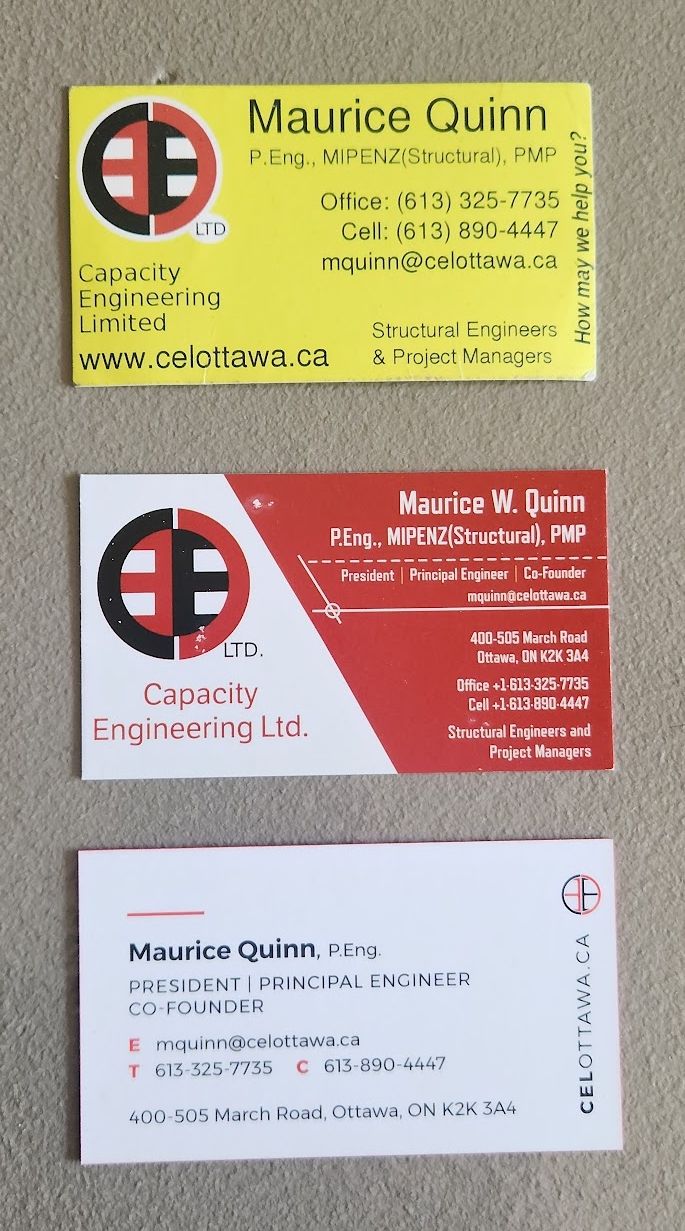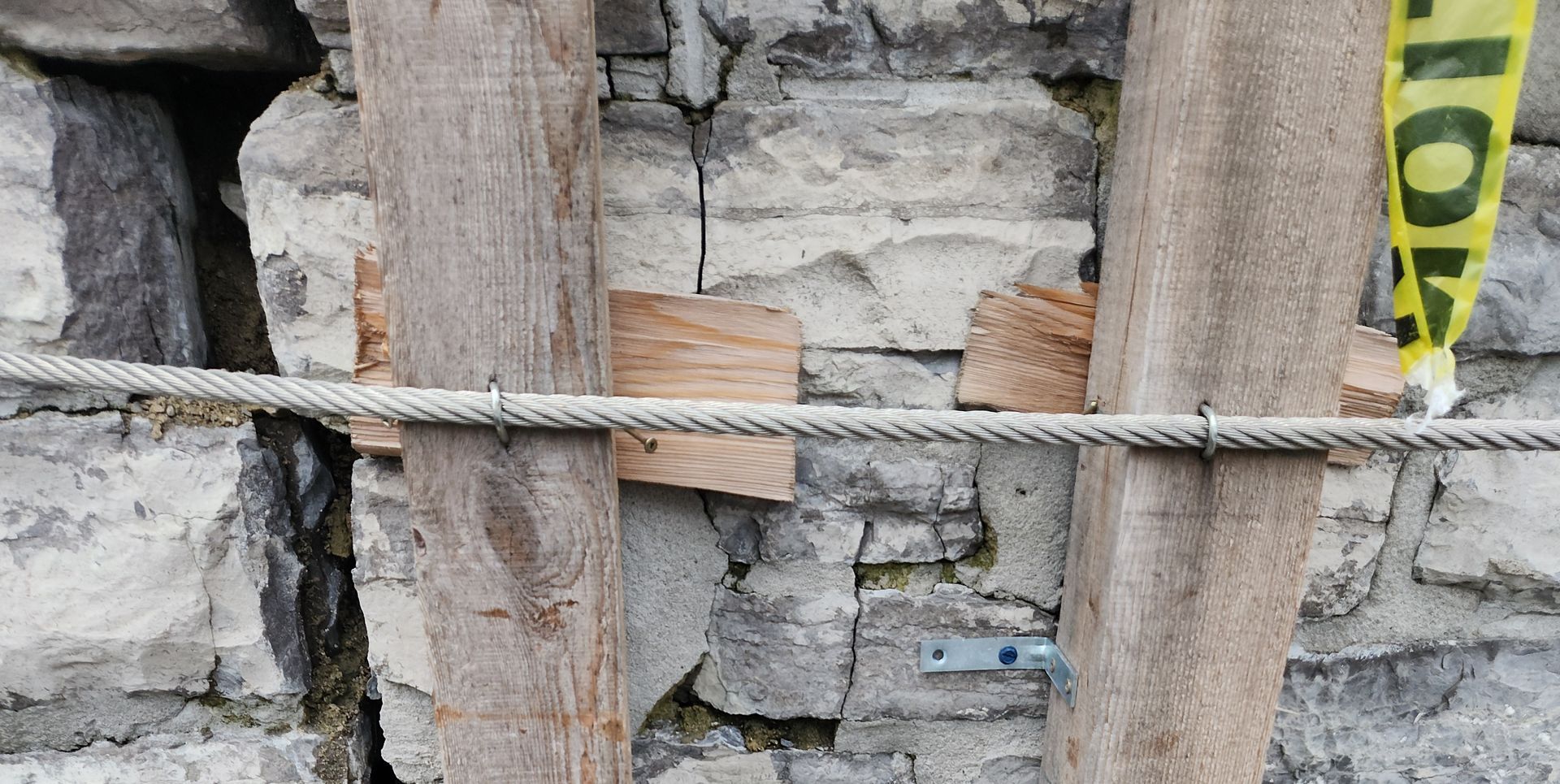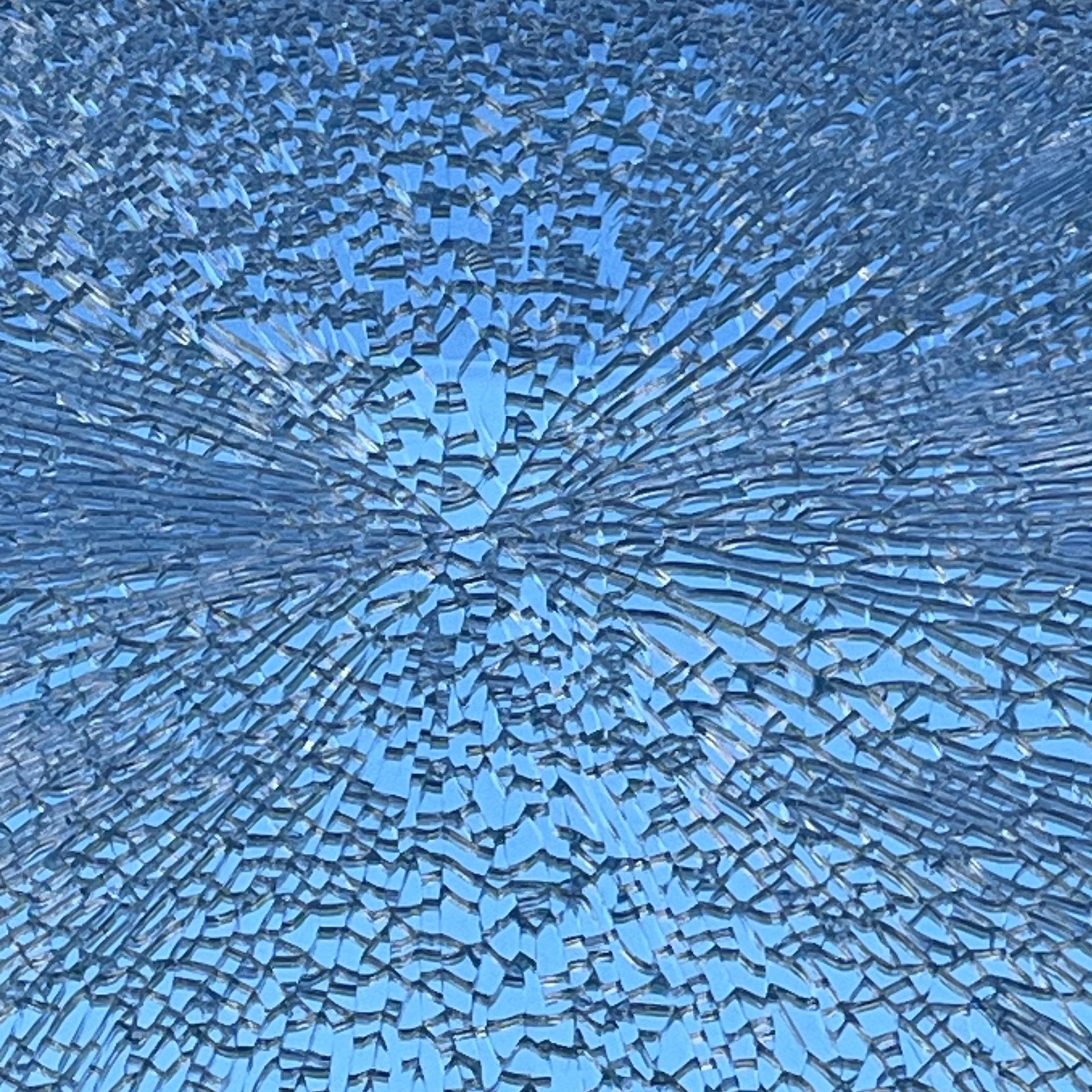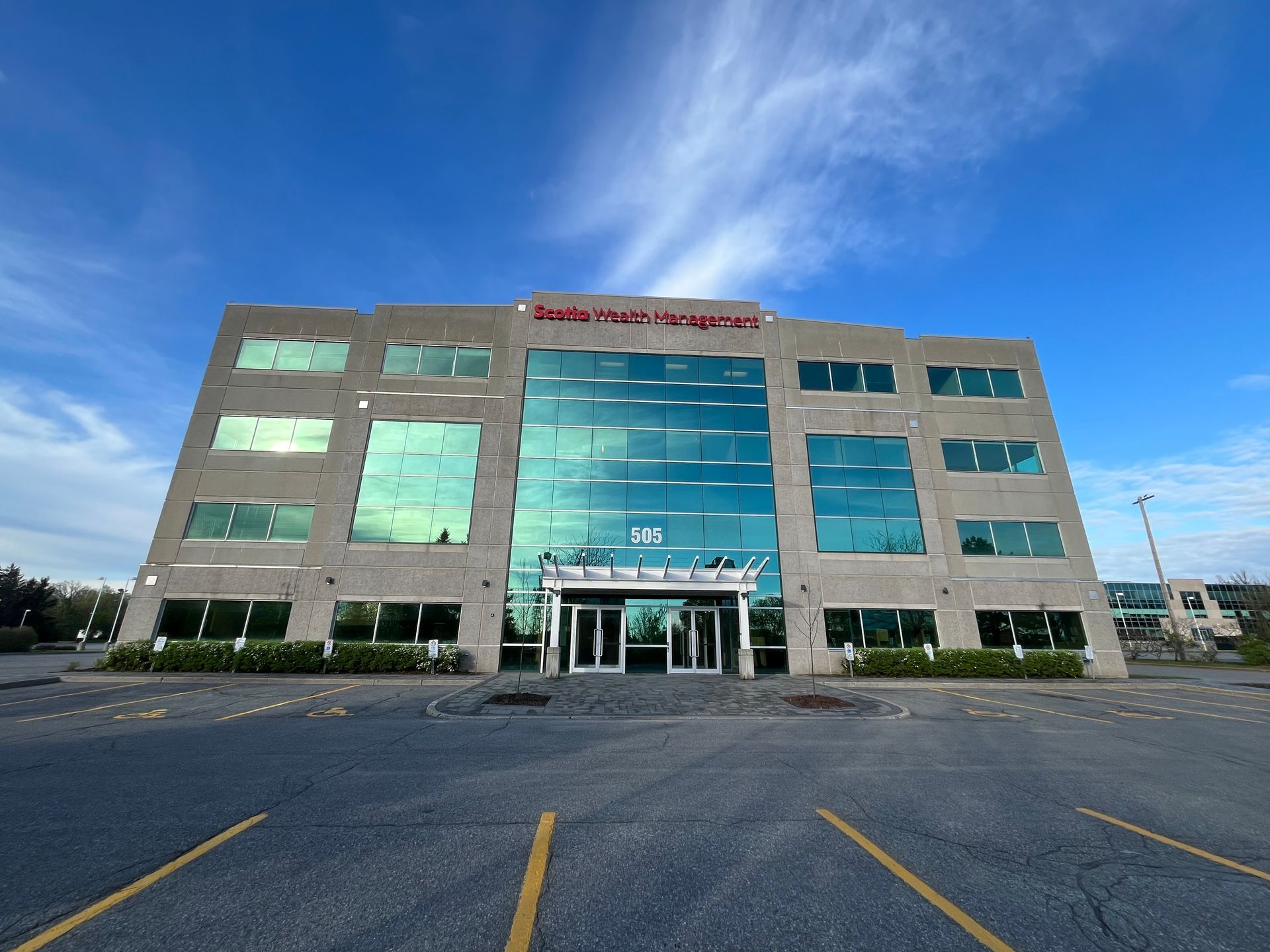Maintenance Plan: Myth or Reality?
The PMPS - Preventative Maintenance Program Study
Maintenance Plans
do matter - And you most likely
don't have one!
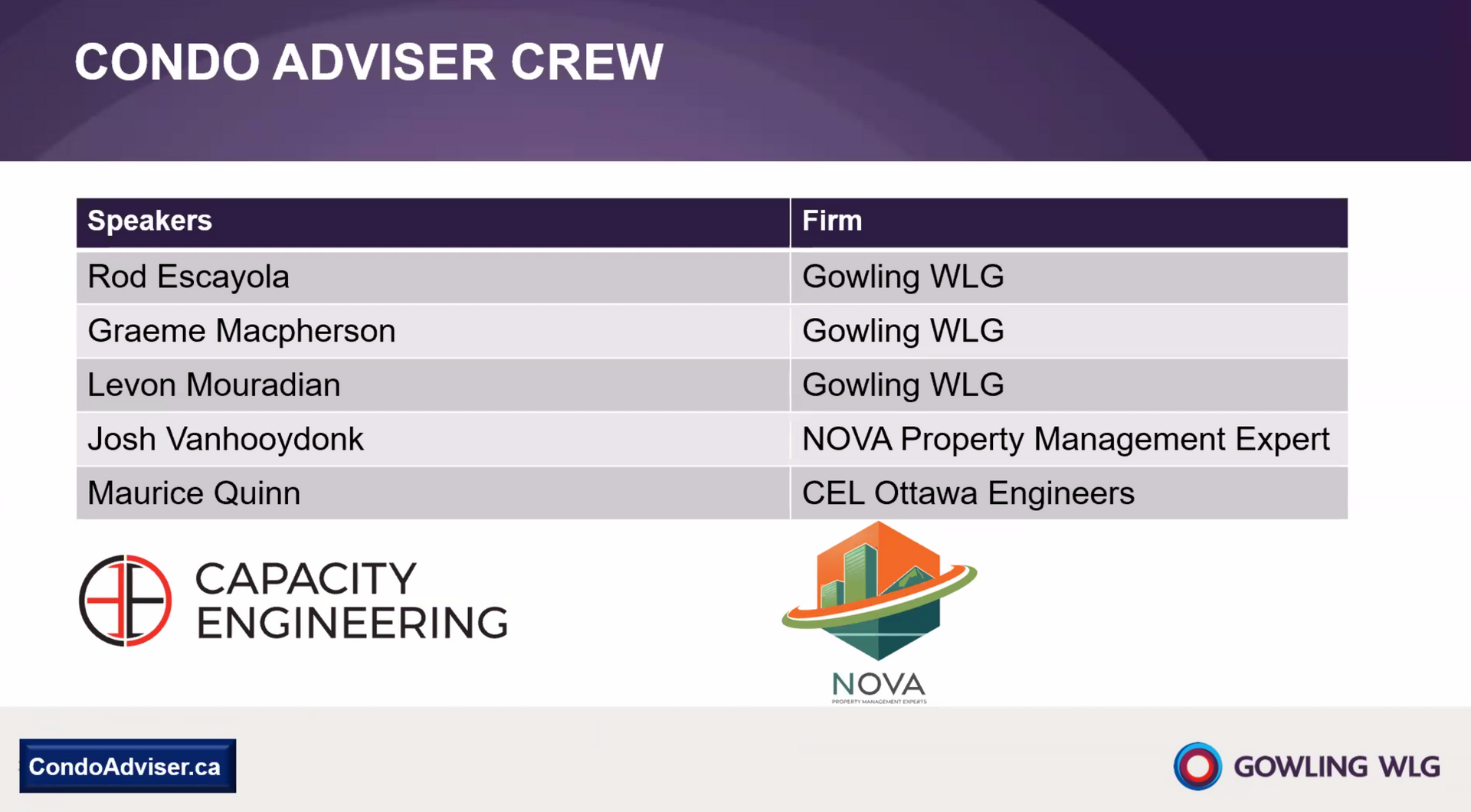
I was honoured to be invited to participate in the Condo Adviser Crew's Podcast (webinar) earlier today. Many people asked for the slides and background information; I thought the preparatory notes I made might make for a good CEL Blog Post.
I want to thank Rod Escayola and the other guys again for inviting me to present. It was a fun, and I think quite informative, session.
Here are my notes, including some anecdotes, and I hope they are helpful...
The Reserve Fund process was instituted into law in Ontario in 1998. The threshold for inclusion of a part or element for replacement was set at $500. It was not indexed.
In 1998, when I took my girlfriend to the movies, it cost us $20. That’s now closer to $50. If we look at the consumer price index, it was ~$91 in 1998, and it is ~$162 today. Some metrics show a higher rate of inflation, including construction materials.
So costs in real terms are two to three times greater than when the RFS Process was implemented. While the RFS threshold value remains at $500, which does increase the scope, we need to think about the $1000 and $1500 range for the intended threshold.
The RFS isn’t a maintenance plan, and was never intended to be about routine maintenance.
The RFS process, mandated under Ontario's
Condominium Act, 1998 (s. 94–97) and O. Reg. 48/01, was engineered for
major capital planning, not holistic upkeep.
The Condominium Authority of Ontario (CAO) Guide on Governing Condos mentions the word ‘maintenance’ a total of three times. The first time recommends that a preventative maintenance program be implemented. The second states that “Condominium boards are often faced with many more risks than they can reasonably insure or respond to, without skyrocketing maintenance fees.” The third openly states that governance may be contrasted with condominium board operations [ ] which may be thought of as dealing with repair and maintenance work or handling day-to-day owner requests [ ]. It all comes down to risk management. The issues covered by an RFS are major, but while the flashy major problems may have attracted enough attention to get legislated, it is the minor works and routine maintenance issues that truly suck up funds.
You need to be focused on your risks, and on the long term Total Cost of Ownership.
Risk is a measurable factor, only very poorly understood by most people. We do not have a good feel for the intangible risks of deterioration and quality. By leveraging an analytical model, we can make the risks tangible, and thus prioritize them properly.
Risk = Probability x Impact
While we can clearly see that large dollar items will lead to high risks even with low probabilities (roof replacement, parking garage rehabilitation, foundation repairs), I want to stress that the risks of small dollar amounts with high probabilities are in the aggregate just as high.
In this presentation I argue that as you are required by law to engage in major works planning program and have an RFS produced for your condominium’s capital planning, you are required by ethics and duty to engage in a routine and minor works planning program to create a study for the Minor works. At CEL we call this the Preventative Maintenance Program Study (PMPS).
Deferred Maintenance is a Gamble
The risks exist, and ignoring them or deferring routine and required maintenance only leads to emergencies and far higher costs.
Preventative Maintenance Program Study - PMPS
For your RFS, you have the Common Elements > $500 replacement.
For your PMPS, we have all Common Elements.
The PMPS should touch upon all equipment, without exception. There is no dollar limit involved. The document encapsulates every needed, recommended, and scheduled action.
The PMPS - We begin with the identification of Risks.
With the PMPS process, we create a
Risk Register in which
all Common Elements and their probable failures are listed. Then we look at
how we can de-risk the entries.
What we are advocating for is that, with everything you do, you look to
Plan - Do - Check - Act. Think about this in your planning, and discuss it in your documentation.
Plan with the Reserve Fund Study (RFS) & Maintenance Plans (PMPS)
Do the interventions, minor, and major works.
Check with monthly checklists, annual visual inspections, and routine monitoring.
Act to address negative change, and produce positive results.
Here are some sensible “rules” to maintain by:
Water is your enemy, and never your friend. Never ignore a stain, drip, or other issue.- Salt water is the nemesis of every property, element, surface, and asset. Wash it away.
- Paint is Cheap - Section Loss is Expensive. Paint early, and paint often.
- Dirt destroys, and hides deficiencies. Keep it all clean.
- Touch up, tidy, and track. Record and know your conditions.
Now, let’s discuss motivation - Deferred Major Maintenance
Statistically,
minor maintenance is the key to legitimate deferral; postponing major needs through prevention, not neglect.
Industry data shows:
- Preventive actions can defer 70–80% of major repairs by extending service life.
- Every $1 invested in routine upkeep yields $3 to $5 return in reduced total costs.
- Deferred maintenance compounds at ~7% annually.
Ex: Neglecting stack flushing (saving ~$10,000) can turn into a $50,000 in burst pipe in 5 years.
Contrast this with
financially motivated deferral, which prioritizes short-term cash flow (e.g., low fees to attract buyers) over sustainability. Boards might "save" 10-20% on budgets today, inviting catastrophe: 81% of condo associations report surprise infrastructure failures from neglect, costing 3 to 7x more in emergency repairs. In Ontario, this manifests as balcony failures or envelope leaks—exacerbated by un-indexed RFS thresholds that undercount inflation-driven needs.
Earned deferrals (through Minor Maintenance) builds equity and avoids special assessments; Un-Earned (ie: financial) deferral erodes it, passing a ticking time bomb to the future.
Key Elements of a PMPS
While each PMP should be building specific, and relatively unique, they should all break down and organize the required routine actions of running the building and engaging with the maintenance support companies involved.
Your PMPS Should Include:
- Scheduled inspections and servicing: For building envelopes, HVAC systems, elevators, plumbing, electrical, and common areas (e.g., roofs, parking lots, lobbies).
- Preventive actions: Cleaning, lubrication, minor repairs, and vendor coordination to catch issues early.
- Documentation: Logs for compliance, budgeting ties to common element expenses, and integration with the annual budget or RFS updates.
- Frequency: Often annual or seasonal, with some items (like elevators) requiring monthly/quarterly checks per Ontario regulations (e.g., Technical Standards and Safety Authority for elevators).
Every Day Actions and Omissions
Maintenance is more than planning, but implementation of details.
We’re going to discuss several competing interests which push and pull for your financial resources. Let’s establish some basic language to make the discussions easier: Interventions, Minor Works, Major Works, Deferred Work, and Emergency Work. Awareness is your need to be knowledgeable and informed about your property, such as monthly property inspections, Condominium Management checklist walk-throughs, Annual Site Visits from your Reserve Fund Study Engineers, and the RFS Cycle itself. Interventions are the regular and inexpensive tasks like power washing, touch up painting, and patching. Minor works are best summarized as the work undertaken under your maintenance contracts, localized repairs, crack filling, new coats of paint. Major repairs are everything else; the catastrophic and planned but necessarily massive. Deferred Work is that which has grown due to deferral (sometimes, if rarely, wise; always expensive). Emergency Works are, in a well run Condominium, the result of unpredictable or sudden failures; they happen to everyone, and should be planned for financially. There is no building like the Parson’s One Horse Shay.
If you remember nothing else from my presentation, please remember this: Every $1 in minors yields $3 to 5 in deferred required major repairs.
The Dutch say "onderhoud appartementencomplex," the German I cannot pronounce, but is "Gebäudewartung Tipps," the French "entretien immeuble collectif," and Japanese "マンション維持管理", which I cannot even begin to read.
At the core of all maintenance and operations should lay a methodology to make your work predictable and regular. I recommend the formal adoption of the Plan - Do - Check - Act.
Roadways: Cracks and Bird baths become pot holes, pot holes destroy your subgrade. Fill your cracks and bird baths; do not wait. Pay attention to the condition of your riding surface, with annual patch repairs being undertaken each spring, and crack filling each summer. Hot, low-viscosity, rubberized asphalt sealant will flow most in summer. Clean out the crack completely, and blast it out with first water, then air. Ensure it is dry through torching. Torch the existing asphalt to both sides immediately prior to applying the hot-pour rubberized asphalt sealant. Do it right, do it regularly. Your road will last fifty percent longer.
With every maintenance decision, you will be facing quality decisions. Do not cheap out on the quality of necessary works. Also, do not default to the “recommended” product. There are many reasons for which someone may recommend a product. They are not always in your own best interest.
Road Paints: The old oil paints are no more. That doesn’t mean you need to adopt the largely unproven (to be kind) technology of water based paints. USE ACETONE. Oil was always the best performance to cost, but never the best paint. Acetone was more expensive than oil, but a much better performer. The cost difference between oil and acetone didn’t justify making the switch. The abysmal performance of the water based paints strongly justifies the use of the acetone paints. Often, the water based paints are more expensive to the greatly superior acetone. Do not hear water and think “Environmentally friendly”. That just isn’t the case, and remember the rules: water is NEVER YOUR FRIEND.
I am professionally a proponent of Sherwin Williams Setfast Acetone Yellow Marking Paint, sales number 800055923
Quis costodiet ipsos Costodes - Rational Maintenance Contracts
Who watches the watchers?
If you have a maintenance contract in place, generally this is going to require the company undertaking the maintenance to do the inspections. They will, particularly in the case of elevators, also be carrying out maintenance from the money you already have paid them. That means they have a financial interest in the equipment passing inspections. And they do the inspections.
Do not entrust the maintenance and monitoring of elevators to the people who have a financial interest in deferring any work or warranty coverage. Engage an independent elevator consultant.
It is, sadly, the case that we find elevators run more slowly than they should be or running outside of the tolerances and vibration limits, generally because to correct them would be a cost to the people deciding that they are running good enough. The impacts of their poor performance are felt by you; the savings of not repairing them promptly or running them at the agreed speeds are kept by the elevator contractor. Win-Lose, and you’re playing chess against a Grand Master, when you were only meaning to play checkers.
Foreign Wisdom
Condominium living is relatively new in Canada. Ontario created this option for development with the Condominium Act, 1967. European systems and those in Latin America pre-date the Canadian implementations by decades, and adoption has been much faster. While ~16% of residential units in Ontario are Condos, this is 88% in the Netherlands.
Countries which have much higher rates of adoption for condominium or shared / common element systems have a much greater political interest and professional focus on the needs of those properties. As such we have seen these other jurisdictions as a natural fit for high-quality routines from these countries which may then be integrated by our clients into bylaws, and maintenance procedures. While precise systems differ, and are not directly comparable, we will accept generally that joint ownership equates to compatibility in interests to our Condo system.
Key to every maintenance program, and greatly emphasized by jurisdictions with condos as a dominant model of ownership, is inspections over reactions. As a rule of thumb, two thirds of your maintenance and operations dollars should be focused on prevention and preventative maintenance. This should take all forms of prevention, from cleaning, through passive repairs, to active intervention, to the quality of the larger repair programs and details used therein. A dollar spent as a premium to a repair in order to extend the service life is nearly always a dollar wisely spent.
Estimate your impacts with PERT methods: Use a simplified statistical model. Get at least three estimates, and leverage this information.
PERT: ( Optimistic + 4 x Realistic + Pessimistic ) / 6
Using this simple tool can leverage knowledge and greatly improve your understanding.
Maintenance Planning & Implementation:
Plan - Do - Check - Act
Maintenance is knowledge.
Know your building.
Understand the risks.
Plan to minimize the risks.
Your failure to plan is a plan for failure. The reality of maintenance planning is that no one knows all the little details, but working together you can create a true plan for success. A way to measure and value your risk.
Whether you ignore them or tackle them, your risks are still there.
Don’t let the Minor Risks become Major Projects and Special Assessments.
Plan - Do - Check - Act.
Proactive Minor Maintenance in Ontario Condominiums: Beyond the Reserve Fund Study Minimum
Key Resources on Minor and Routine Maintenance for Long-Term Building Health
Know your building. Know your conditions. Record and note changes regularly. With most Condominiums, there is great value in having a group of volunteers take care of this as a partially social task. Many issues, caught early, can be addressed inexpensively, rather than grow into a larger issue and greater cost.
I’ve put together some of the easiest low-hanging fruit for most Condos. These practices focus on low-cost, high-impact actions that prevent degradation from various uses, exposures, and environmental stressors like Ontario's harsh winters (e.g., freeze-thaw cycles, road salts). They can extend asset life by 20–50% in many cases, measured against industry benchmarks. If you want to have more than my professional word for the particular action and the utility to your building, we would be most pleased to run the analysis on your behalf, however, these are generic examples prepared as they are commonly of great value, and offered to you in an honest effort to assist. They are entirely without responsibility, and cannot be said to rise to the level of professional advice.
Call to Action
- Take routine maintenance seriously.
- Stop taking unearned deferrals that multiply your basic needs into emergencies.
- Engage in a PMPS process like your RFS process.
Take maintenance seriously before less than $500 becomes more than $5,000.
What's in a Name?
I much prefer the term "Podcast", but the Condo Advisor site uses "Webinar". Either way; I think you would all find a great deal of value in the Webinar, and likely in the past webinars: https://condoadviser.ca/webinars
See 2 October 2025 if you want to watch us discuss Maintenance Plans.
